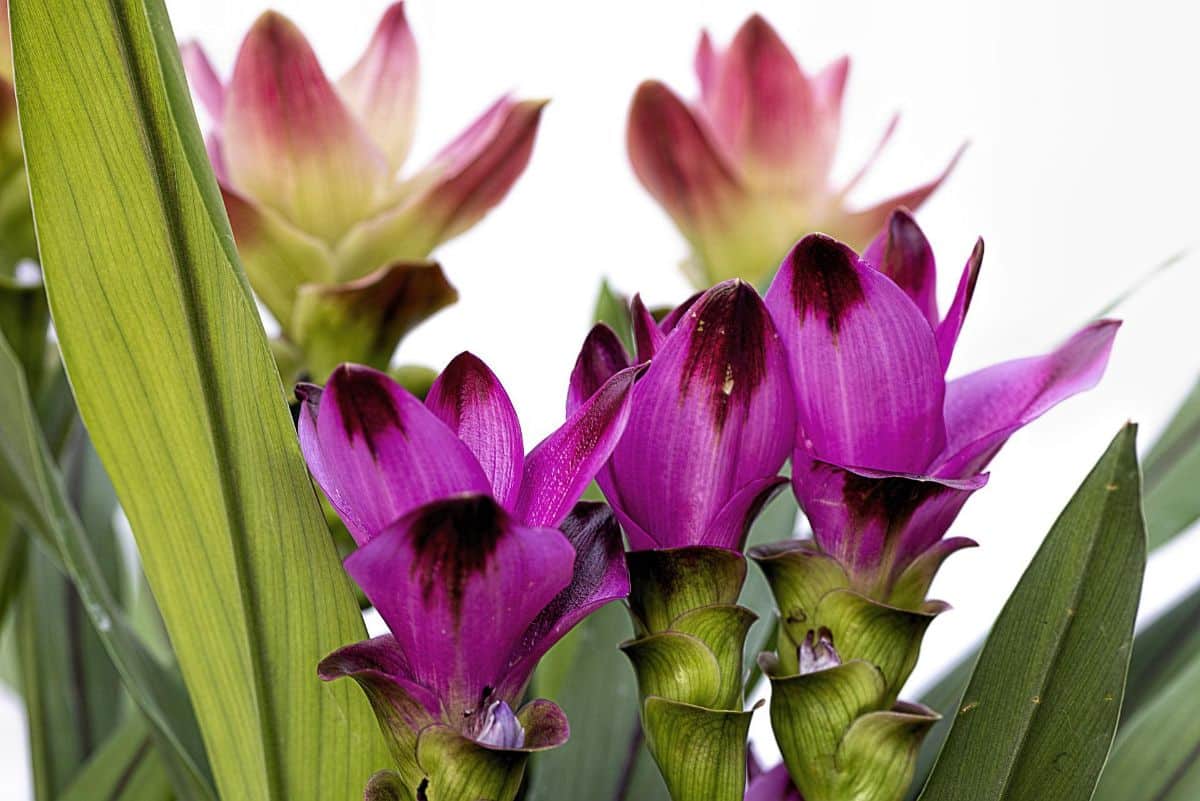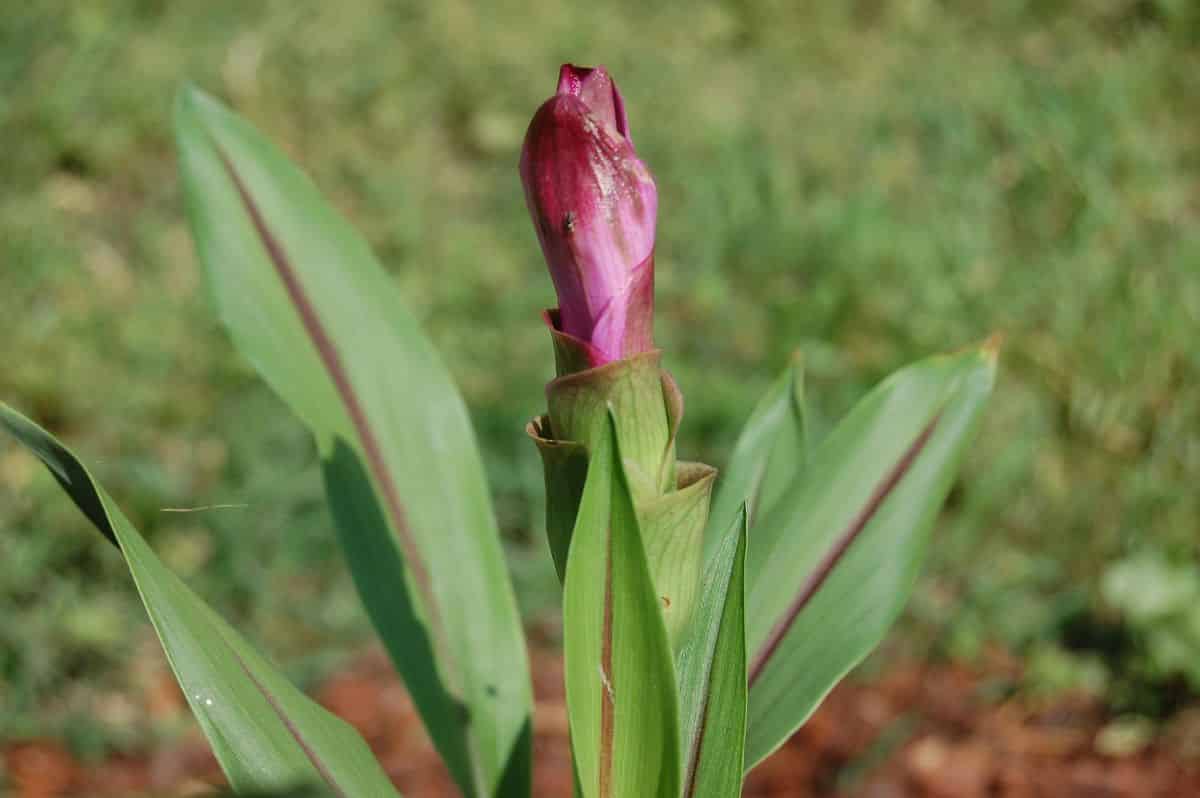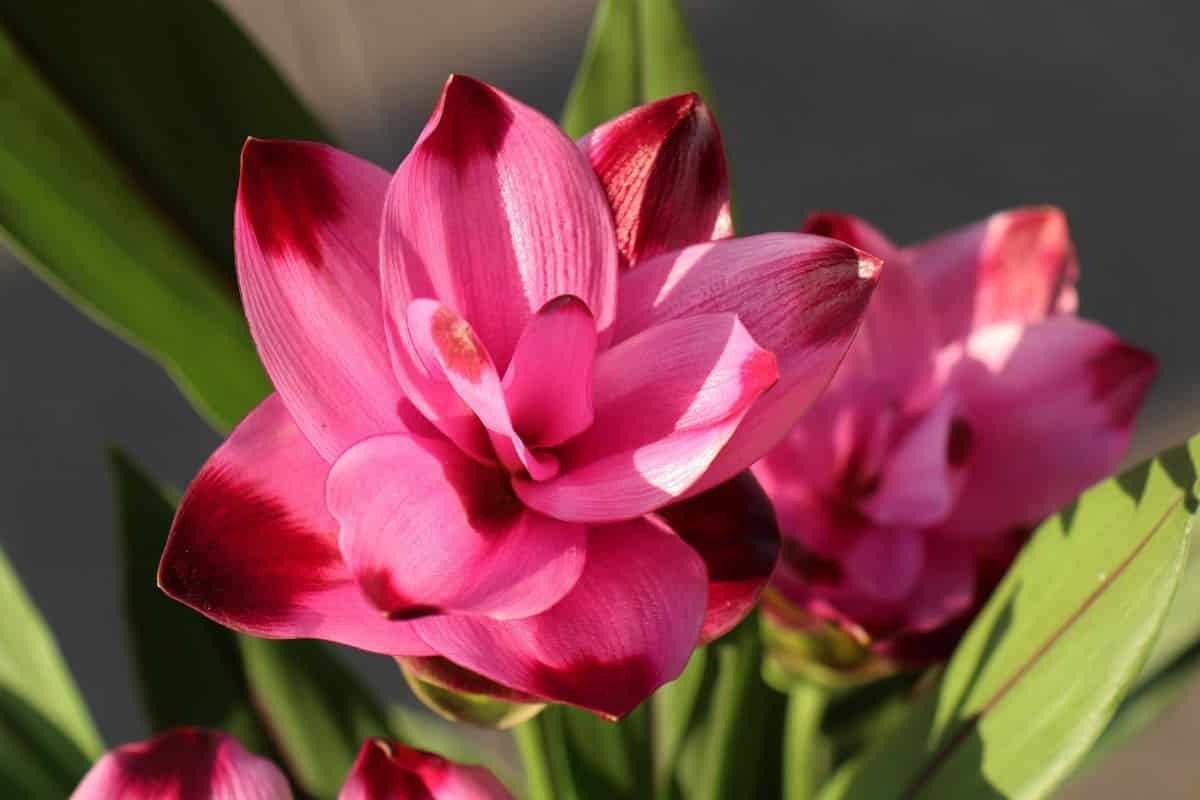
You may not know it, or when you hear the word turmeric the first thing that comes to mind is a food seasoning. But in reality, there is a turmeric plant that is very easy to care for and, in return, you get a beautiful plant. Want to know more about her?
If you have a turmeric plant at home, you have seen it in the store or on the Internet and now you want to have it at home, these are the cares that you must provide to get ahead.
Turmeric plant: important care

In case you don't know, the turmeric plant It is characterized by having a more or less branched rhizome.. The leaves of this are very elongated but the most beautiful are the flowers, which grow in spikes and turn from yellow to orange depending on the variety of turmeric.
It is a plant whose activity occurs in the spring and summer months, remaining lethargic in autumn and winter. In fact, it is recommended that, when that time comes, the rhizomes are removed and stored in a place where the temperature does not drop below 17ºC to prevent damage, and in spring, with the first shoots, it is planted again.
Location
The truth is that one of the needs of the turmeric plant is light. It needs to be exposed to a lot of light, but be careful, because it does not have to be direct light. In fact, it is possible that it is too much and ends up burning it. So that leaves us being able to put it outside or also inside. In other words, you can have it in a pot inside the house, or planted in the garden in a bright area but not in direct sunlight.
What does it depend on? Apart from what you want, the temperature you have also influences, something that we will tell you about below.
Temperature
From what we have said before, you will know that one of the cares of the turmeric plant to take into account is that do not suffer from the cold because it is the time when you are lethargic and where you can get sicker.
The turmeric plant does not take cold well, nor does frost, obviously. It is not advisable for the temperature to drop below 17 degrees.
On the other extreme, although it can withstand heat, when the thermometer exceeds 35ºC the plant begins to harm it, even becoming paralyzed and stop growing or being damaged.

Substratum
Having seen the above, you may have realized that the plant can be outdoors or indoors. In both cases you need a good land for it to develop properly.
For this, the best mixture, whether you have it in the garden or in a pot, is the combination of mulch, peat and sand. In addition, a somewhat larger drainage could be added, such as perlite or akadama, because this way it oxygenates the roots better and serious problems in terms of waterlogging are avoided.
Irrigation and humidity
There is no doubt that one of the most important turmeric plant care is watering. It is a plant that needs slightly moist soil., but not flooded, because if it is like this, it is more dangerous for you to lose it.
Of course, keep in mind that You should only water in spring and summer. In autumn you have to start suspending watering because it doesn't need it (it goes into a state of rest). But as soon as the first shoots come out, you have to get down to work.
Perhaps at this point irrigation is not as important as humidity. As a good tropical plant that it is, a medium humidity prevails before watering. What does it mean? Well, you will have to water less if you control the humidity of the plant well.
Subscriber
This part is very important and it is that, As soon as the first shoots appear in spring, it is advisable to fertilize it every two weeks. If it is small, or it is the first year that you have it, unless where you buy it they tell you otherwise, it is better to take it out once a month because you do not know how it is going to react and because there is so much change (from one place to another) with the subscriber can deteriorate the plant.
The best fertilizer for this plant is liquid, which you will mix with the irrigation water. Add a little less than the manufacturer's recommended dose. And if it is also rich in nitrogen, potassium, phosphorus, copper, iron, magnesium... much better.
Pruning
With the turmeric plant you will not have to worry about this care because it is a plant that cannot be pruned. At most, you will only have to remove the parts that are drying out or that look dead, weak, diseased, etc.

Plagues and diseases
Among the pests and diseases that you should keep in mind that affect the turmeric plant, are the aphids, which can be of different colors (and can be fixed with insecticides for plants), red spider and mites (these two can fix it by increasing the humidity of the plant and using some chemical (or natural) product).
Related to diseases, most of them have to do with the lack or excess of humidity and irrigation.
Multiplication
The way to reproduce the turmeric plant is quite simple since it is based on the division of its rhizomes.
To do this, you have to wait for spring, when it is transplanted or planted, and observe if there are extra rhizomes. If so, with the help of a clean and disinfected knife you can very carefully divide it into portions. Of course, make sure they have roots and at least 2-3 leaves so they can get ahead.
Cut wounds are best treated. You can use fungicide products, sulfur or even cinnamon, which helps protect it from diseases and other problems.
As you can see, the care of the turmeric plant is not complicated at all. Perhaps where you have to put more emphasis is above all on irrigation and humidity, but once it adapts to the climate and seasons for a year, it is easier for it to get ahead and not die. Do you have doubts about it? Ask us and we will help you solve it.